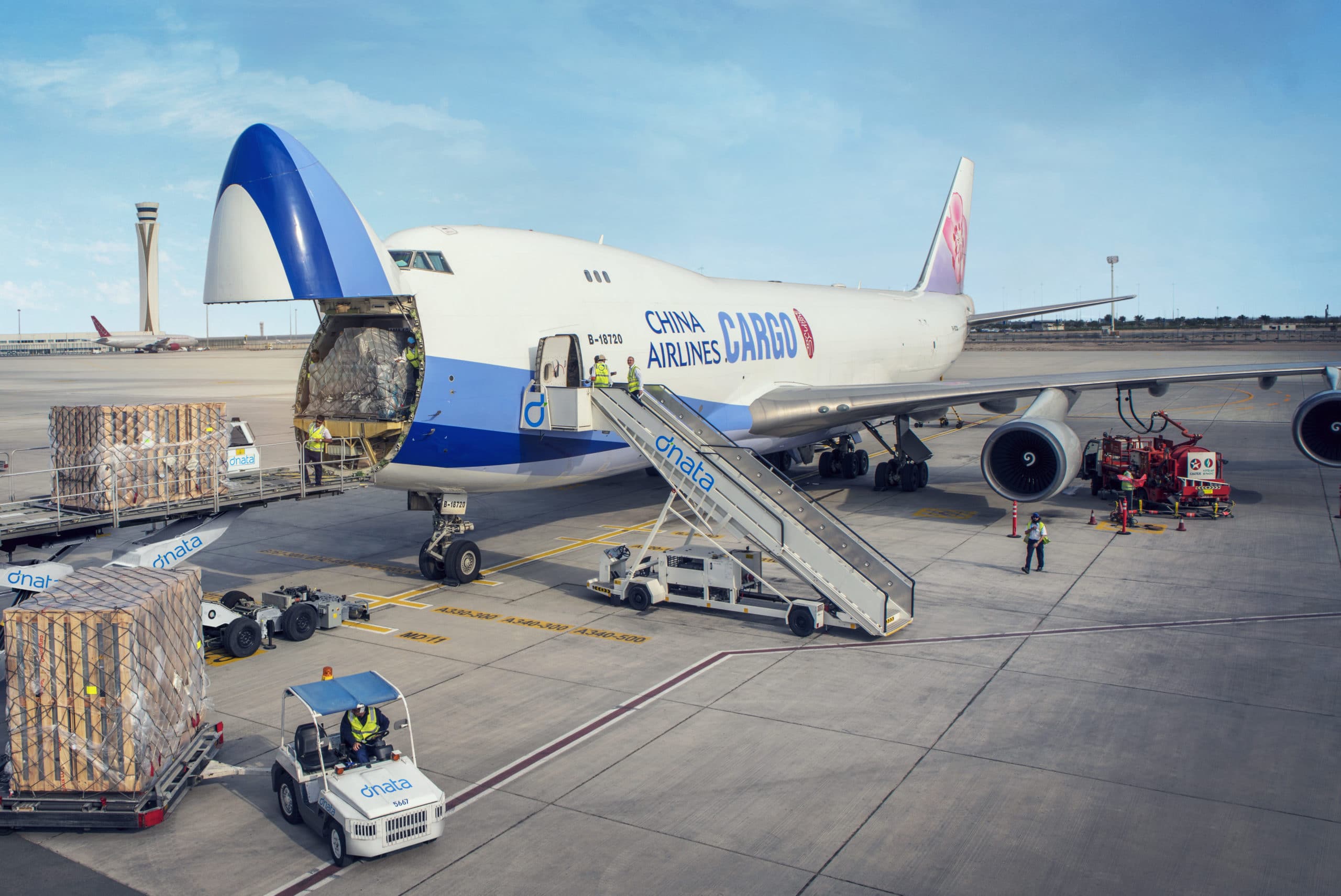China Airlines Chairman, Hsieh Su-Chien, says in an interview that prioritizing cargo operations was essential to the carrier’s survival.
How will you deploy your new aircraft?
China Airlines reintroduced its widebody passenger aircraft replacement program in 2021, following a delay caused by the pandemic. We have ordered 16 Boeing 787-9s with the General Electric GEnx engine. Deliveries are expected to commence in 2025 and the aircraft will become the mainstay of the medium capacity widebody fleet.
Evaluation focused on five key operational criteria—fuel efficiency; maintenance; payload; flexibility; and industry and future market acceptance. The 787-9’s fuel consumption and carbon emissions are about 20% lower than the previous generation of widebody passenger aircraft. Higher flying speed also translates into shorter flights for an optimized cost structure.
Ease of maintenance is based on composites and metal alloys in the fuselage structure that are more suitable for the humid climate of the tropics. Both passenger and cargo carrying capacity are excellent, and the ability to carry 36 containers in the bellyhold offers higher operational returns. Cargo was instrumental to China Airlines’ survival during the pandemic and remains an essential part of its business in the post-pandemic age.
The option to purchase the 787-10 will enable high-capacity routes, while the next-generation cabin design provides a more comfortable environment and a better flying experience for passengers.
How important has cargo become to your strategy?
China Airlines is one of the market leaders on high-traffic cargo routes around the world and the scale of our cargo capacity gives us an edge over the competition. The SARS epidemic in 2003 had previously triggered a sharp decline in passenger revenue that impacted overall operations. At the time, the cargo business stepped into the breach and helped the company weather the crisis.
Passenger air travel was once again hard hit by the sudden COVID-19 pandemic. But international demand for medical supplies and the consumption of goods remained solid. This again highlighted the importance of air cargo in stabilizing the industry supply chain and connecting international trade and economies.
During COVID-19, China Airlines adopted “prioritize cargo over passengers” as our business strategy. The advantages of freighters, with regards to loading and unloading over-sized or specialty cargo, were combined with the bellyhold of passenger aircraft to reinforce the importance of Taiwan as an Asia-Pacific hub for the transshipment of goods.
A flexible schedule helped expand our cargo network and develop new potential markets to keep the company profitable during the pandemic.
China Airlines is one of the top ten air cargo international carriers in the world and our 747- 400 freighter fleet is the largest in the world. We took full advantage of our freighter capacity and promoted custom charter flights as well as expanding our high-priority, e-commerce, postal, and temperature-controlled businesses. At the same time, we stepped up use of passenger bellyholds and used passenger cabins for carrying cargo.
It proved to be a record year in 2021 with more than one hundred cargo-carrying charter flights in a single month. A new single-month cargo revenue record of TWD15.4 billion was set in December and we exceeded TWD10 billion in cargo revenue for five consecutive months and surpassed TWD100 billion in cargo revenue for the year. This was an increase of 52% over 2020 and made 2021 the best year for the cargo division in the company’s history.
New 777F freighters on order are now being delivered as well and four have arrived so far. One more 777F is scheduled for delivery in Q4 2022 and the fleet will reach ten aircraft by 2024.
Are you optimistic about air travel in Asia-Pacific or will the mix of travel restrictions hurt demand?
Continued travel restrictions and uneven vaccine rollouts in Asia-Pacific meant that its recovery lagged that of Europe and North America. Nevertheless, as national governments continue to relax their COVID-19 border restrictions, pent-up demand is now gradually being released and the volume of passenger air travel is growing faster than anticipated.
Asia Pacific saw a growth of 528.8% in July compared with the same period last year and 23.1% compared with June. There have been five consecutive months of growth as well. Air passenger demand in 2022 is expected to reach 73.7% of 2019 levels, while the capacity will return to 81.5%. The Pacific Asia Travel Association (PATA) estimated that 2024 international visitor arrivals in Asia Pacific will reach between 86% and 120% of 2019 levels. The Economist Intelligence Unit also expects the Asian tourism industry to recover by 2024.
International passenger volumes in Europe and America are significantly higher because they opened their borders relatively quickly. In Taiwan, the Central Epidemic Command Center only loosened quarantine measures in mid-June. Even though there was still a cap on total arrivals, the volume of passengers passing through Taoyuan Airport in July was 382.8% higher than the same period last year.
Once restrictions are fully removed, nearly three years of pent-up tourism and travel will drive growth from Q4 2022 onwards and bring about the revitalization of the entire air travel industry.
What are the other major challenges in the region?
Factors affecting the global airline industry include the Russian-Ukrainian conflict, drastic fluctuations in fuel prices, labor shortages, slowdown in economy growth, inflation, and high inventories.
The more dispersed nature of the Asia Pacific market means that leading airlines must develop connecting hubs with wider coverage to stay competitive. But the inconsistent border restrictions, different national quarantine requirements, and lack of regional coordination has hampered progress. All these affect passenger flow and delay the restart of air travel.
There are signs of recovery, but the revitalization of the airline industry is dependent on having the right policies in place. Nations should provide safer and more convenient measures for international travel to ensure the continued growth of the airline industry.
Do alliances still have a role in the post-pandemic industry?
China Airlines joined SkyTeam in 2011. The alliance continues to expand its global network and we partner with other members to connect Taiwan to major destinations around the world.
China Airlines has been an active participant in various SkyTeam programs since we became a member. We also shared our resources with SkyTeam partners to jointly develop systems that reduce operating costs. Traveler services were upgraded across the board through the sharing of alliance service products and programs such as SkyTeam VIP lounges, SkyPriority, and SkyTransfer.
Airline alliances will continue to pay dividends for China Airlines’ operations in the post-pandemic period. Digital and technological developments in particular will be key areas of competition. Their core value will come from bridging gaps in service when traveler itineraries span multiple airlines. The next step is to build traveler confidence in air travel while coexisting with COVID-19, and to introduce service recovery to deal with changes in itineraries, making air travel more predictable in the post-pandemic period.
Sustainability is another focal area for SkyTeam. Sustainable flights operated by member airlines helped the alliance develop more environmentally friendly processes that will contribute to the Fly Net Zero goal.
SkyTeam also supports the IATA 25by2025 initiative. China Airlines hopes to promote greater diversity and gender equality in the industry as well as contribute to the sustainable development of the airline industry.
Are sustainability initiatives a luxury in the current financial crisis or are they essential to the industry’s future?
Supply chain disruptions and energy crises due to extreme weather, inflation, fluctuating currency rates, geopolitical conflict, and COVID-19 are all generating concern about another global financial crisis. Unlike past financial crises though, current conditions are more favorable to the promotion of green recovery and sustainable development.
Lockdowns and quarantines imposed to contain the COVID-19 virus brought about a natural shift in economic activity and structure. During the COVID-19 pandemic, a flexible approach was adopted by our management team for proactive risk management, the development of corresponding response strategies, consolidation of resources, and the dynamic adjustment of passenger-cargo operating plans. The continued profitability of our core business despite prevailing trends was the outcome of our investments in sustainability.
China Airlines supports international initiatives on carbon reduction and the mitigation of climate change. We also took up “The Sustainable Flight Challenge” issued by SkyTeam through our demonstration flight from Taipei to Singapore.
Furthermore, we are the only transportation company in Taiwan to have signed the Buckingham Palace Declaration banning the illegal trade of wildlife and plants. We were also the first airline and transportation company in Taiwan to sign and issue our “Declaration on Forest and Biodiversity Conservation.”
How can the production of sustainable aviation fuels in Asia-Pacific be improved?
Sustainable aviation fuels (SAF) have many challenges, and overcoming them will take government leadership and support, as well as the cooperation of the industry supply chain. Solutions are beyond the means of any individual party.
There is strong support for SAF development in the West and a basic framework for the SAF market and supply chain is beginning to take shape. By comparison, the integration of such resources in Asia is not yet complete. Governments and stakeholders in the Asia Pacific region should refer to the Western experience with SAF development and take local conditions into account to develop a joint policy for supporting the SAF supply chain. They must also develop a usage policy that balances airline sustainability and market fairness.
China Airlines began including 10% SAF on the new A350 from 2017 onwards and on the new A321neo from 2021 onwards. During this time, China Airlines hosted a number of industry-government-university research symposiums and expert consultation meetings on SAF to share both international knowledge and our own experience in its use. Later, we even mobilized the industry and formally requested, through the Taipei Airlines Association, government support on SAF. The Taiwanese government has indicated its support for such a policy.
What new technologies excite you?
Environmental protection through green energy. China Airlines continues to introduce greener and more fuel-efficient aircraft. We are monitoring and evaluating next-generation aviation developments, such as hydrogen fuel and electric propulsion, to determine the most cost-effective time for their introduction. In ground operations, we are planning to expand the installation of high-efficiency renewable energy, such as solar power.
We have continued to support important international environmental research projects too. China Airlines has been participating in the Pacific Greenhouse Gases Measurement (PGGM) project since 2007, for example, in partnership with the EU In-service Aircraft for a Global Observing System (IAGOS) research body, the Taiwanese government, and National Central University. Since 2012, our A340 and A330 aircraft have been used to monitor trans-Pacific climate data.
Rapid advances in Virtual Reality will become a key trend in aviation maintenance. Benefits of the technology include an increase in maintenance efficiency, reduced training hours of maintenance technicians, and savings on ground training costs. The technology reduces difficulty with training on aircraft components or equipment in hard-to-access areas, effectively shortening the training cycle while enhancing overall maintenance results.
The development of contactless operations and technologies will also continue to be a priority for air travel in the post-pandemic period. These will encompass all passenger processes from pre-departure and check-in at the airport, to boarding and disembarking from the aircraft.
Self-service boarding with facial recognition is now being progressively activated at selected airports, including San Francisco, Hong Kong, New York, and Los Angeles, as the airport facilities are upgraded.
Overall, do you think passenger expectations have changed following the crisis or do you see it as business-as-usual in the years ahead?
Post-pandemic travelers not only pay attention to safety and hygiene during their trip but also want more affordable fares. However, airlines are facing a jump in operating costs due to volatile fuel prices, inflation, labor shortages, and epidemic prevention costs. Whether higher travel costs and inflation will impact interest in overseas travel remains to be seen.
Airlines are enhancing the flying experience for travelers. China Airlines introduced the new A321neo passenger aircraft in 2021. This year in-flight entertainment offerings were upgraded again with the launch of the “Dynasty Sky Reading” e-book service. Travelers on all aircraft types and in all cabin classes can now use smartphones and other personal electronic devices to download an unlimited number of books, newspapers, and magazines.
China Airlines is also optimistic that growth driven by pent-up tourism and travel demand will stimulate the recovery of the passenger market once the border restrictions are lifted. Our goal in the passenger business is a return to pre-pandemic levels of operations and profitability. Taiwan announced in September that border restrictions will be eased over two stages. To take advantage of the expected market recovery, China Airlines is increasing service frequency 50% in Q4 2022. The number of flights on Northeast Asia routes will increase from 30 a week in Q3 to more than 100 a week. Tokyo, Osaka, Fukuoka, Nagoya, Sapporo, and Seoul will all see more services on their routes.
China Airlines will also increase frequencies to Southeast Asia and on long-haul routes. We are also actively promoting trans-regional products transiting through Taiwan.



